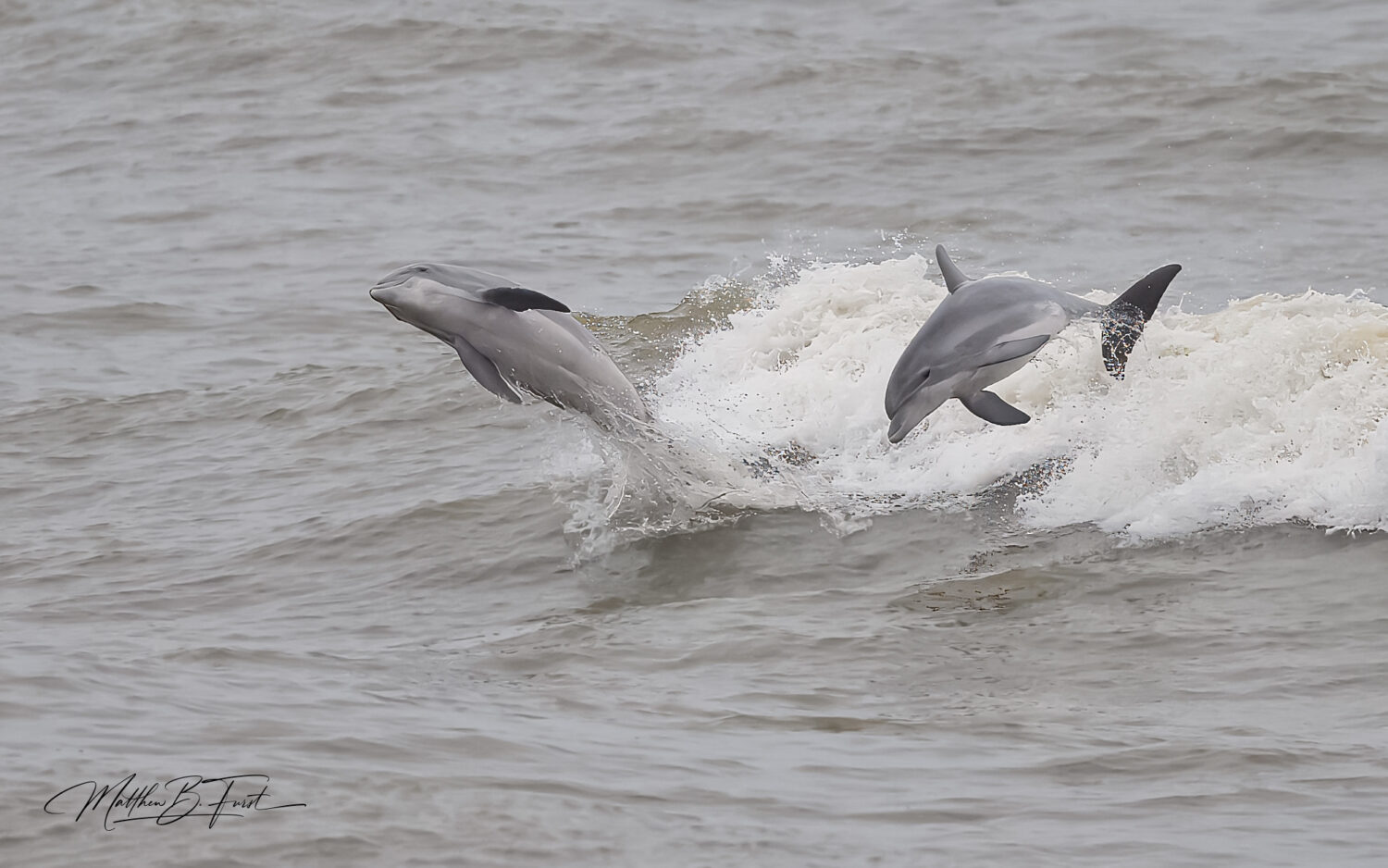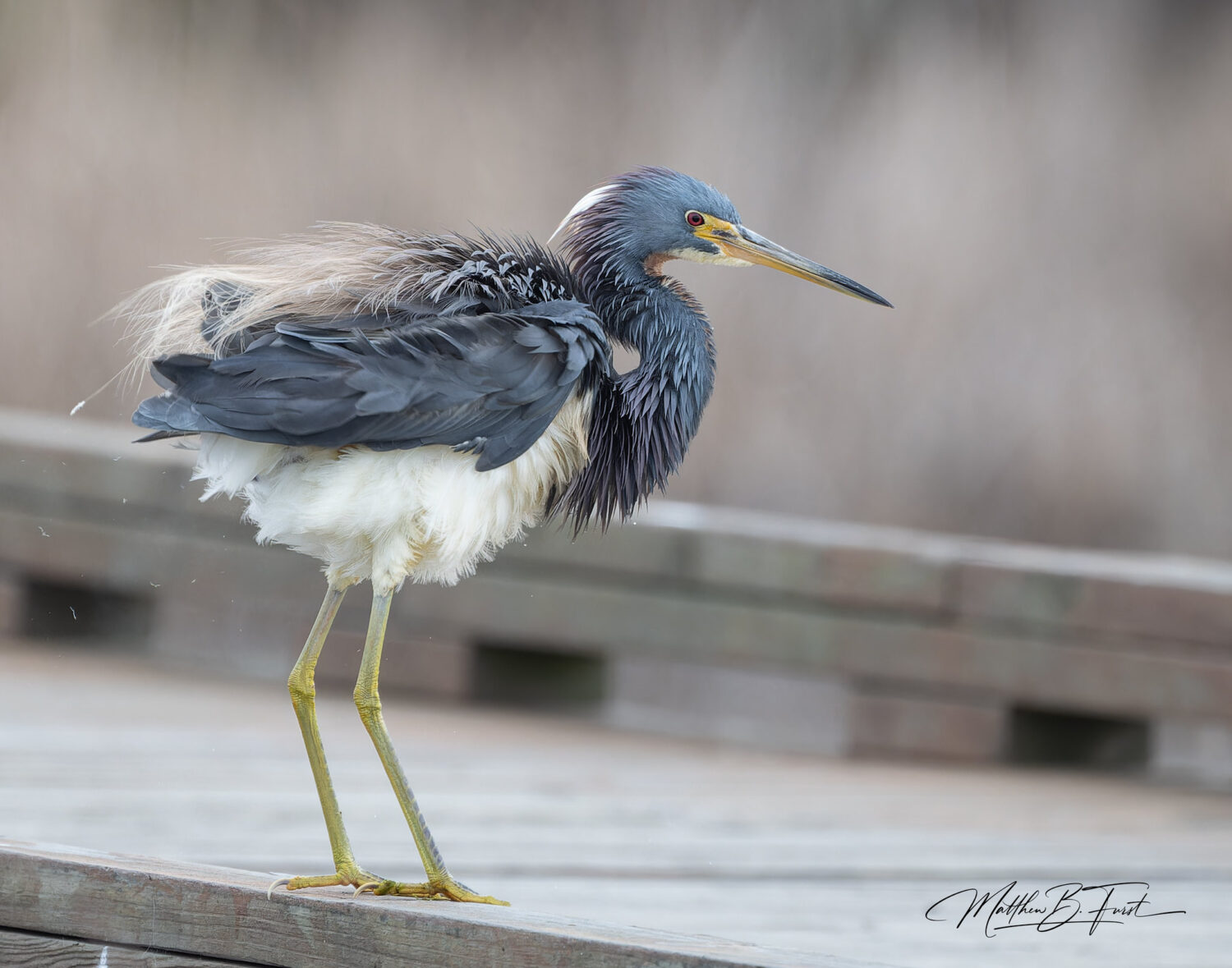Every year, my wife goes above and beyond to make my birthday special, and her gift-giving prowess reaches its peak when she gives me a trip tailored to my passion for wildlife photography. This year, I was delighted to explore the Anahuac National Wildlife Refuge and the Bolivar Peninsula in Texas. The experience was heightened by our stay in a charming beachfront Airbnb, where the soothing sounds of the ocean served as the backdrop to our adventures. The local seafood cuisine was a highlight, treating our taste buds to an array of flavors. However, the true essence of the trip lay in the captivating wildlife photography opportunities that unfolded before my lens. From colorful birds to elusive marshland creatures, the Anahuac National Wildlife Refuge provided a canvas for me to capture the beauty of nature. The Bolivar Peninsula, with its scenic landscapes, added another layer of excitement to our photographic journey. This annual tradition not only celebrates another year of life but also deepens my connection to the wonders of the natural world.

The Anahuac National Wildlife Refuge is situated along the upper Texas coast, approximately 45 miles east of Houston. Covering over 34,000 acres, the refuge encompasses a mosaic of habitats including freshwater marshes, coastal prairies, and oak mottes. The Bolivar Peninsula, on the other hand, extends into the Gulf of Mexico and is located just northeast of Galveston. Accessible to the north by ferry from Galveston or road by traveling east then south from Houston, the peninsula offers a unique blend of coastal landscapes and habitats.

Traveling to the Anahuac National Wildlife Preserve and the Bolivar Peninsula was effortless by flying Southwest Airlines into Houston Hobby Airport. As a major air travel hub, Houston Hobby offers convenient access to the region from anywhere in the US. After landing, we easily secured a rental car at the airport. The scenic drive to both pristine destinations was a breeze. Within a short distance, we found ourselves immersed in the rich biodiversity of the Anahuac National Wildlife Preserve, capturing the essence of the Gulf Coast’s natural beauty. Continuing along, the scenic drive to the Bolivar Peninsula we found ourselves with picturesque coastal views that set the stage for a memorable getaway. The seamless connectivity from Houston Hobby Airport to these two areas makes it convenient for photographers looking to explore both of these diverse ecosystems.

My wife, though not a photographer herself, is always happy when I choose the beach as a location for my wildlife photography expeditions. The Bolivar Peninsula of Texas does not disappoint as a beach location and offers an array of enchanting beachfront accommodations for rent, providing an idyllic setting to unwind and enjoy the breathtaking beauty of the Gulf Coast. Imagine waking up to the soothing sounds of the waves crashing against the shore and stepping onto your private balcony to witness spectacular sunrises over the expansive horizon.

From cozy beach cottages, like “Cabn by the Sea” shown above that we chose, to spacious vacation homes, these rentals offer not only comfort but also unparalleled access to the pristine sandy beaches. These accommodations are designed to maximize the coastal experience, with large windows and spacious decks that provide unobstructed views of the Gulf of Mexico. Whether you’re sipping your morning coffee while watching the sunrise or winding down with a cocktail as the sun dips below the horizon, these beachfront rentals provide a truly magical and rejuvenating escape. Dolphins, Osprey, and shorebirds can be photographed from the comfort of your balcony overlooking the Gulf.

The Bolivar Peninsula in Texas also boasts a delightful culinary scene with a variety of establishments offering delicious options for every palate. For seafood enthusiasts, Stingaree Restaurant and Bar is a must-visit, offering stunning waterfront views and an extensive menu featuring fresh catches from the Gulf. The Nauti Beaver Hut is another standout spot, known for its casual atmosphere, live entertainment, and a diverse selection of seafood dishes prepared with a creative twist. The Tiki Beach Bar & Grill offers a relaxed setting with tasty bites and refreshing drinks. Local favorites like Jose’s Cajun Seafood and Hardheads Icehouse & Grill also contribute to the area’s gastronomic appeal, serving up flavorful Cajun-inspired dishes and classic American fare. Whether you’re in the mood for seafood extravagance or casual beachside dining, the Bolivar Peninsula has a range of culinary opportunities waiting to be explored.

The Anahuac National Wildlife Refuge and the Bolivar Peninsula in Texas stand out as remarkable destinations for bird and wildlife photography enthusiasts. These areas boast diverse ecosystems, teeming with a wide variety of bird and animal life. One of the primary attractions for bird enthusiasts is the rich avian diversity found in these areas. Anahuac National Wildlife Refuge serves as a vital stopover for migratory birds along the Central Flyway. The refuge hosts a plethora of waterfowl, shorebirds, and wading birds throughout the year. Species such as roseate spoonbills, white-faced ibises, and northern pintails can be spotted in abundance. The bird checklist for Anahuac lists 323 different species considered part of the refuge. The list can be found here, https://www.fws.gov/sites/default/files/documents/Anahuac%20Bird%20Checklist%20with%20TCP%202020.pdf

Within the expansive Anahuac National Wildlife Refuge (NWR), several specific areas beckon wildlife and bird enthusiasts, each offering a unique glimpse into the diverse ecosystems of the Texas coast. The Shoveler Pond, characterized by its vast freshwater marshes, provides a haven for waterfowl, wading birds, and alligators. Photographers can capture striking reflections of these avian residents in the tranquil waters, especially during the early morning or late afternoon light. The Skillern Tract, featuring coastal prairies and tidal flats, is an ideal spot for observing shorebirds and migratory species. The Anahuac NWR Auto Tour, winding through various habitats, allows visitors to explore the refuge by car, offering convenient opportunities to photograph birds in their natural surroundings. The Willows Trail and the Butterfly Garden showcase the refuge’s commitment to conservation and provide additional settings to photograph butterflies and native plant life. Each of these areas within Anahuac NWR contributes to a holistic wildlife photography experience, where photographers can witness the beauty of nature across a spectrum of habitats and ecosystems.

Situated along the Gulf of Mexico, The Bolivar Peninsula boasts several distinct areas that captivate wildlife photographers with their scenic beauty and diverse habitats. The Peninsula complements the refuge’s offerings with its own array of coastal birds. Seabirds, including pelicans and gulls, are a common sight along the shorelines. Extensive dunes and beach habitats also attract nesting shorebirds like Wilson’s plovers and least terns.
The Bolivar Flats Shorebird Sanctuary stands out as a prime location, featuring expansive mudflats and tidal pools that attract a plethora of shorebirds. From sandpipers to gulls, this sanctuary offers photographers a dynamic setting to capture birds in their natural foraging and nesting behaviors. The Rollover Pass, where the Gulf meets Rollover Bay, serves as a hotspot for observing coastal birdlife and is particularly picturesque during sunrise and sunset. The Crystal Beach section of the Bolivar Peninsula is known for its pristine beaches and dunes, providing opportunities to photograph seabirds against a backdrop of sand and surf. Each of these specific areas within the Bolivar Peninsula contributes to the allure of this coastal haven.

While birds take center stage, both locations are also home to a diverse range of animal life. Alligators are a notable feature in the freshwater marshes of Anahuac, adding an element of excitement for photographers seeking to capture these ancient reptiles in their natural habitat. The refuge also hosts a variety of mammals, including raccoons, nutria, river otters, and bobcats.
On the Bolivar Peninsula, the coastal environment provides opportunities to photograph marine life. Dolphins can often be spotted playing in the Gulf waters, while crabs and other coastal creatures inhabit the marshes. The combination of terrestrial and marine life adds depth to the photographic opportunities presented by these regions.

High Island and the Smith Oaks Sanctuary, both located in the area, offer bird photography enthusiasts unparalleled opportunities to capture the beauty of avian life in diverse and unique settings.
High Island is renowned as a migratory hotspot, attracting birds as they journey across the Gulf of Mexico. The woodlots and coastal habitats make it an ideal location for birdwatchers and photographers alike. One of the key attractions is the Houston Audubon Society’s Boy Scout Woods Sanctuary, a well-known birding site within High Island.

During the spring migration, High Island becomes a spectacle as neotropical migrants make a pit stop in the area. Warblers, tanagers, and orioles are among the many colorful songbirds that grace the woodlots, providing photographers with a vibrant palette of subjects. The elevated viewing platforms at Boy Scout Woods offer excellent vantage points to capture birds at eye level, enhancing the quality of photographs.
In addition to songbirds, High Island is frequented by shorebirds and waders. The diversity of habitats, including ponds and marshes, attracts species like herons, egrets, and sandpipers. Photographers can experiment with different compositions against the backdrop of coastal landscapes, creating dynamic and visually striking images.

Adjacent to High Island, the Smith Oaks Sanctuary is another gem for bird photographers. A significant highlight of this sanctuary is the iconic Rookery, a place where great egrets and roseate spoonbills come together for nesting during the breeding season. The sight of these elegant birds against the backdrop of their nesting colonies is a visual feast for photographers.
The carefully designed photography blinds at the Rookery provide a unique opportunity to capture intimate moments of bird behavior without disturbing the natural activities of the colony. The proximity to the nesting birds allows for detailed shots, showcasing their breeding plumage and intricate courtship rituals. Early mornings and late afternoons are particularly enchanting, as the soft lighting enhances the ethereal quality of the scenes.

Apart from the Rookery, Smith Oaks Sanctuary encompasses diverse habitats such as oak mottes and coastal marshes. This variety attracts many bird species, from migratory songbirds to resident waterfowl. The sanctuary’s trails and boardwalks offer photographers the chance to explore different environments and adapt their techniques to various birding scenarios.
Both High Island and the Smith Oaks Sanctuary underscore the importance of conservation efforts in preserving critical habitats for birds. The controlled access and well-maintained trails ensure that photographers can enjoy a rich and immersive experience while minimizing disturbance to the wildlife.

Wildlife photographers need to consider the timing of their visit, as timing can significantly impact the photographic experience. Spring and fall are particularly favorable for birdwatching and photography due to the migratory patterns of many species. During these seasons, the refuge becomes a hub of activity with birds arriving or departing on their long journeys.
Winter is another excellent time to visit, especially for waterfowl enthusiasts. The mild Texas winter weather ensures the refuge remains hospitable for photographers and avian visitors. Summer brings its own charm, with lush vegetation and opportunities to capture the breeding behaviors of resident bird species.

Photographers should also consider tidal patterns and plan their visits during low tides to capture shorebirds feeding in exposed mudflats. Sunrise and sunset provide optimal lighting conditions, casting a warm glow over the landscapes and enhancing the visual appeal of photographs.
In conclusion, the Anahuac National Wildlife Refuge and the Bolivar Peninsula in Texas stand out as premier destinations for bird and wildlife photography. The combination of diverse ecosystems, abundant bird and animal life, and easy accessibility make these areas a haven for photographers seeking to capture the beauty of nature. Whether it’s the vibrant plumage of migratory birds or the serene landscapes along the Gulf Coast, these locations offer endless opportunities for photographers to hone their craft and create stunning visual narratives of the natural world.
